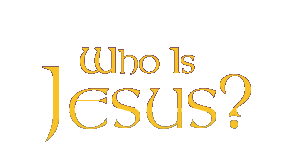by Martin G. Collins
Forerunner,
"Bible Study,"
May 5, 2011
Just prior to this miracle (Matthew 14:13-21; Mark 6:30-44; Luke 9:10-17; John 6:1-14), the people anticipated where Jesus was headed. By walking along the north shore of the Sea of Galilee, the crowds joined Him, and He, feeling compassion, healed their sick. When evening came, the disciples sought to send the crowds away because supplies in that remote place were inadequate to feed so many. Despite having only five loaves of bread and two fish at hand, Jesus desired to give them something to eat, and with just these, He performed an astounding miracle. The bread and fish continually multiplied so that everyone was satisfied—so much that twelve basketfuls of broken pieces were left over.
This took place at Bethsaida just before the Passover (John 6:4). Jesus primarily intended this miracle to teach the disciples, although a witness of the Son of God's power had also been impressed upon the multitude. In it, Jesus illustrated the kind of ministry His disciples would conduct after His departure: feeding people with spiritual food, and their source would be Christ Himself. They would have to replenish their supply of spiritual food continually by maintaining a close relationship with Him, but they would be responsible for feeding their congregations.
1. What godly characteristic does Jesus display that we must emulate?
Comment: Jesus is "moved with compassion" when He sees the needy multitudes exhausted and wandering like sheep that had been tattered from cruel fleecing. Twice He is "moved with compassion" when He sees the hungry multitudes without food (Matthew 14:14; 15:32). The two blind men (Matthew 20:34) and the leper (Mark 1:41) also stir His compassion, as does the sorrow of the widow at Nain (Luke 7:13).
In addition, Jesus uses the word translated "compassion" in three of His parables: The king has compassion on his bankrupt servant and forgives him his debt, showing how we should forgive one another (Matthew 18:21-35). The Samaritan has compassion on the Jewish victim and cares for him in love (Luke 10:25-37). Finally, the father has compassion on his rebellious son (Luke 15:20).
We, too, should show compassion toward others. Compassion, a fundamental and distinctive quality of God, is literally "a feeling with and for others." It lies at the foundation of Israel's faith in God, because, in an act of compassion, He delivered them from slavery and called them to be His own people. His compassion does not fail (Lamentations 3:22). Jesus teaches that it should be extended, not only to friends and neighbors, but to all, even to our enemies.
2. What solutions to our problems does this miracle provide?
Comment: Jesus watched His frustrated disciples try to solve the problem of feeding the multitude, but "He Himself knew what He would do" (John 6:6). He wanted to teach them a lesson in faith and submission. In this story, we can see certain steps we must take in solving our own problems:
1. Start with what you have. Andrew found a boy who had a small meal and brought him to Jesus. Was the boy willing to give up his lunch? Yes, he was! God begins where we are and uses what we have.
2. Give what you have to Christ. Jesus took the simple meal and blessed it. He then divided the bread and fish and gave the pieces to the disciples, who, in turn, fed the multitudes.
3. Obey what He commands. As Jesus ordered, the disciples had the people sit down. They distributed the broken pieces and discovered that there was plenty for everybody. As His servants, we are "distributors," not "manufacturers." If we give what we have to Him, He will bless it and give it back to us for use in helping others.
4. Conserve the results. After the people had eaten their fill, twelve baskets filled with pieces of bread and fish remained. These pieces were carefully collected so that nothing was wasted (Mark 6:43; John 6:12).
3. Why is the bread so important?
Comment: On the next day, Jesus taught in the synagogue in Capernaum, saying, "I am the Bread of Life" (John 6:32, 35, 48). Though willing to receive the physical bread, many would not receive the living Bread—Jesus Christ who came down from heaven. Thus, the miracle of feeding the multitude was actually a sermon with visual aids.
The main lesson of the miracle is that Christ is the Bread of Life to a dying humanity, and in Him, there is enough to satisfy the entire world. Only He can satisfy the spiritual hunger in mankind. Jesus says, "I am the living bread which came down from heaven. If anyone eats of this bread, he will live forever; and the bread that I shall give is My flesh, which I shall give for the life of the world. . . . Unless you eat the flesh of the Son of man and drink his blood, you have no life in you" (John 6:51, 53). The Bread that is Jesus gives life in the present (John 6:35, 47) and eternal life in the future (John 6:27, 40).
The tragedy is that people waste time and money on "that which is not bread" (Isaiah 55:1-7). Waste is an enemy of miraculous generosity, so great care was taken to collect the leftovers, though we are not told how they were used. The lesson is that overabundance does not justify waste.
We also learn that Christ asks that we give Him all that we have and allow Him to use it as He sees fit. When we do this, we never lose, always ending up with more blessings than when we started.

